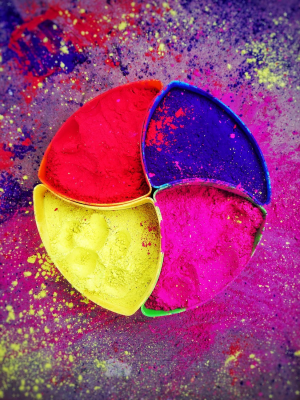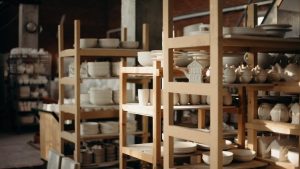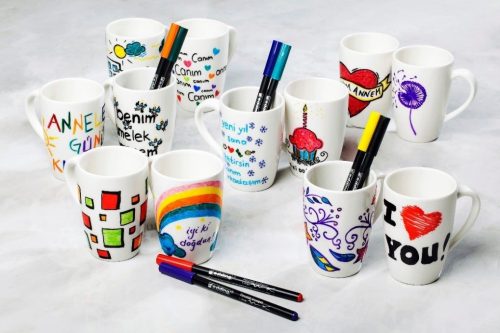Table of Contents
What is clay
According to Oxford Languages, clay is an “earth composed of hydrated aluminum silicates; mixed with water it forms a very plastic material which hardens on firing”. “…clay is the most commonly used raw material for pottery”.
Today there are many types of clay. In the past, crockery was mainly made from clay. Today, this material is used in everything from decorative items to flooring.
1. Earthenware clay
This clay is a mass made up of a mixture of materials such as sand, minerals, and other muds. Earthenware is characterized by being a hard, non-porous mass, meaning it has no holes and is opaque.
What is unique about this clay is that it comes in a variety of colors, from gray to white to red.
Firing temperature
The firing temperature to which earthenware clay should be subjected is 1,300ºC and higher. Therefore, we recommend using an oven that can reach high temperatures. But don’t worry; these ovens aren’t just for experts.
Use
Potters to make tableware commonly use stoneware clay. They also use it in blends to make other, more resilient compounds. These masses are used to make items that don’t break easily, such as B. Wall tiles.
What types of potters use it?
As a rule, advanced potters use this material. So if you are a beginner in this field, we advise against using it.
2. Porcelain clay or kaolin
This clay is also known as “China clay” because it originates from this country. It is one of the purest and finest clays and is characterized by its almost transparent white color.
Porcelain has low plasticity, which means that this clay is very difficult to work with because it is not so easy to shape. Anyone who works with porcelain knows that you have to mix this clay with other types of clay in order to be able to shape it.
This clay is also the most expensive of the different types.
Firing temperature
Kaolin needs a temperature in excess of 1,400º C to fire perfectly, so a kiln that can reach these high temperatures is required.
Use
As the name suggests, china clay is used to make just that: porcelain. The objects made from this clay are among the finest and most beautiful there is. This is due to the fact that after firing, the mass can acquire white or transparent colors that do not require glazes for decoration.
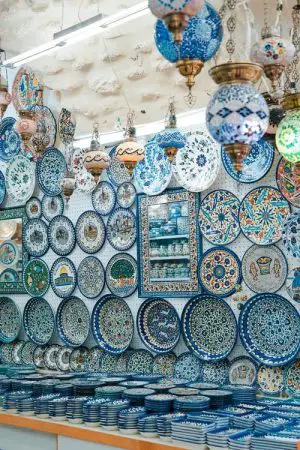
What types of potters use it?
Skilled potters use porcelain because, as mentioned earlier, it needs to be mixed with other types of clay in order to work it.
We advise beginners not to use it.
3. Earthenware clay
This clay is the oldest mud. Although there is no exact date, it is known that this clay was taken from the earth or sand and mixed with river water.
Earthenware is the most porous and plastic of all clays, meaning it can absorb liquids but does not carry much weight and is the easiest to handle.
Firing temperature
Another advantage of earthenware clay is that it only needs low temperatures between 900 and 1,100º C to be perfectly processed.
Use
Earthenware clay is available at an affordable price. From this clay, you can make pots and objects for your home.
What types of potters use it?
Earthenware clay is ideal for beginners and intermediates. So if you are just starting out in the world of pottery we recommend you start with this type of clay as it is easy to source and handle and you do not need a professional kiln.
4. Clay ball
This type of clay owes its name to the way it was collected in the past. While not proven, it is believed that this clay was hand-mined in the form of a sphere or cube. It has been and is currently mined from mines in the eastern United States and North Devon, South Devon, and Dorset, three deposits in southwest England.
Clay ball is also easy to shape by hand. It is available in gray and white colors and can turn a pure white color after firing. This is because this clay contains a high proportion of iron oxide.
Firing temperature
The firing temperature is no more than 1,300º C, so we do not need a professional kiln for this clay.
This material can shrink up to 20% during firing and is most commonly used with other clays to give elasticity to other clays.
Use
Kugelton is distinguished by the fact that it can be used not only for the manufacture of tableware, but also for the manufacture of sanitary ware, as well as wall and floor tiles.
What types of potters use it?
Ball clay is used by professional potters who have years of experience creating items from this type of clay.
5. Terracotta clay
This type of clay is distinguished by its red or yellow color, and after firing, its color can turn into brown and various shades of pale pink. In addition, it is porous and plastic, making it easy to handle.
Terracotta consists of clay minerals such as alkaline earth, iron, and magnesium. These materials make clay plastic.
Firing temperature
For a proper process, the terracotta clay needs to reach temperatures between 900 and 1,100º C.
Use
Terracotta is used to make objects that are exposed to all external temperatures, but especially to the cold. This type of clay is used to make pots for the garden, tiles and roof tiles, among other things.
Another strength of this clay is that it is ideal for using glazes for decoration, so you can paint it the color you want.
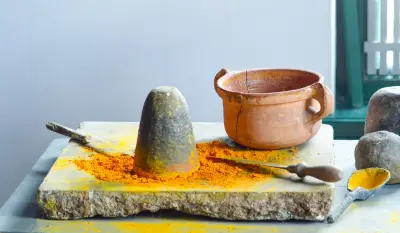
Types of terracotta clay
There are 2 types of terracotta clay:
Red Clay
So called because of its reddish color, both raw and fired; its color is due to its high iron content. It is also known as potter’s clay and is one of the most plastic clays of all.
Blue clay
As the name suggests, this clay has a gray-blue color in its raw state, which is due to its high lime content. Something very striking about this clay is that it turns from blue to yellow after firing.
What types of potters use it?
This type of clay is suitable for all potters of all levels, beginner, intermediate and expert.
6. Raku clay
Its name means “fun” or “happiness”. This clay comes from Korea and Japan, which is why it is widely used in the eastern countries. This type of clay is characterized by rapid burning and cooling after leaving the kiln.
Raku clay is mostly formed by hand without a potter’s wheel because it is a mixture of kaolin, refractory clay and ball clay. Sometimes you can buy the mass ready-made so that you don’t have to mix it yourself.
Temperature during firing
The firing temperatures are between 750 and 1,100º C.
Use
Raku clay can be used to make tiles, sculptures, and tiles.
What types of potters use it?
This type of clay is used by all categories of potters.
In short, we recommend that you use this type of clay for the creation of sculptures, as it is easy to work with and easy to obtain.
7. Cold Porcelain
Cold porcelain differs fundamentally from the previous materials. It consists of various substances such as vinyl glue, mineral oil, hand cream, cornstarch, glycerin, white vinegar, and fabric softener. There are many different production methods and the ingredients mentioned vary depending on the type of preparation. Cold porcelain is also sold ready to use.
This type of clay was developed in China at the beginning of the 3rd century AD. It came from rock and was therefore composed of potassium, calcium, and sodium, making it easy to handle and quick to dry.
Use
Various figures such as flowers, animals, key chains, dolls, rings and other decorative objects can be made from this modeling clay.
When the figurine is ready, it can be painted with glazes, and the surface will look just as beautiful and shiny as porcelain.
Firing temperature
Cold porcelain does not have to be fired, i.e. we do not need a kiln. The material dries in the open air.
What types of potters use it?
Cold porcelain can be used by both experienced potters and beginners.
8. Polymer clay
Polymer clay is distinguished by the fact that it is made of PVC. Remember that PVC is a synthetic plastic made up of hydrogen, chlorine and carbon. This makes this mass waterproof and at the same time very plastic, which means that it is easy to shape.
Firing temperature
Polymer clay can be dried without exposure to a ceramic kiln, although the process is somewhat slow.
A much quicker method is firing in a kiln. We recommend a temperature of 129-135º C. Normally this clay comes with instructions recommending the firing temperature.
If the temperature is too high, the clay will burn.
Use
Basically, polymer clay can be used to make anything from home decorations, dolls, pots and clocks, to coating non-clay objects like cans and glassware to make them more resilient.
What types of potters use it?
This clay can be used by all potters, experts, beginners, and those with little experience. This is a good starting soil as it is also available ready to use.
